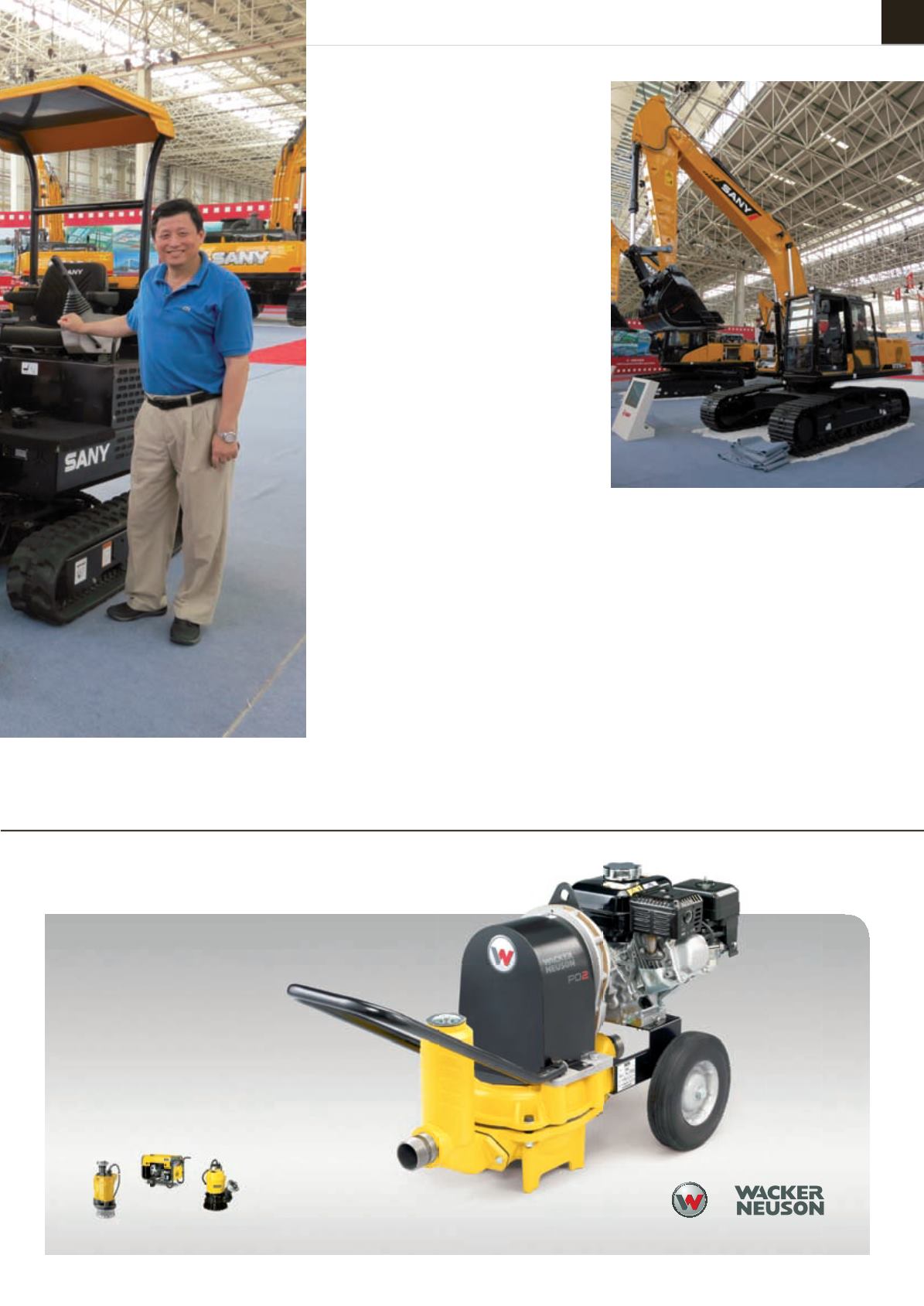
13
IRN SEPTEMBER-OCTOBER 2013
SANY INTERVIEW
companies in Europe and North America will not
happen overnight, with the company having to
establish sales channels as well as machines
designed for these markets. In the mini excavator
sector, for example, he mentions the need to have
zero- and short-tail models as well as a range of
attachments.
The company already has a wide line-up of
excavators in its portfolio, with machines starting at
5.5 t and going up the very large mining units rated
at 195 t. However, it has just four units certified for
western Europe and North America - 7.5 t, 13.5 t, 21.5 t
and 23.5 t machines – and it has no sub-5.5 t models
at all.
That is about the change, however, with Sany
developing 1.6 t and 3.5 t minis as part of its strategy
to become a full line excavator manufacturer. The
company hopes to have the two small models ready
for launch at next year’s Conexpo-Con/Agg show in
Las Vegas.
“You’ve got to have a full portfolio over there [in
export markets], otherwise you can’t compete with
the Cats and Komatsus”, says Mr Dacheng, “If we
have the products, we can start to learn about the
rental market.”
Research & development
Sany has research and development teams in China,
North America and Europe helping to develop the
new products. Indeed, the company is distinctive
in China in spending heavily on research and
development: it invested the equivalent of more
than 5% of total revenues in R&D last year and the
heavy machinery division’s research department
employs more than 1000 people.
The export goal for the excavator business is
even more ambitious for the company than for its
other products, because China currently represents
around 90% of its excavator sales, despite the
downturn. Many of the machines that are exported
end up in Asia Pacific, Africa, India, Eastern Europe
and Latin America, with sales to western Europe and
North America still at very low levels.
If the product line needs some work, the company
is gradually ramping up its excavator manufacturing
footprint. In addition to its two (massive) facilities in
China, Sany has been making excavators at a plant
in Pune, India, for three years and more recently
started assembling some models at its Peachtree,
Georgia facility in the US, and also in Brazil, where
it also has plans to develop a ‘localised’ 20 t unit,
possibly as early as next year.
Of more immediate concern, however, is China’s
slowing market. Mr Dacheng says; “Sany is not
facing serious cash flow problems. Of course, the
sales volume has dropped, but profitability is still
there.”
The company can’t do much about a slowdown in
its home market, but it has considerable scope to
expand elsewhere in the world. And it is important
to note that Sany has a track record of rapid growth:
it produced its first tracked excavator in 2000 and
by 2008 was Chinese market leader with annual
production of more than 13000 units.
IRN
Outstanding
suction capacity
Just one click to the no. 1 choice:
Contact:
The SY215c-9 excavator, pictured at Sany’s manufacturing facility
in Shanghai. The new c-9 series, introduced this year, offers an
8% increase in production capacity and 10% decrease in fuel
consumption over the previous series.


